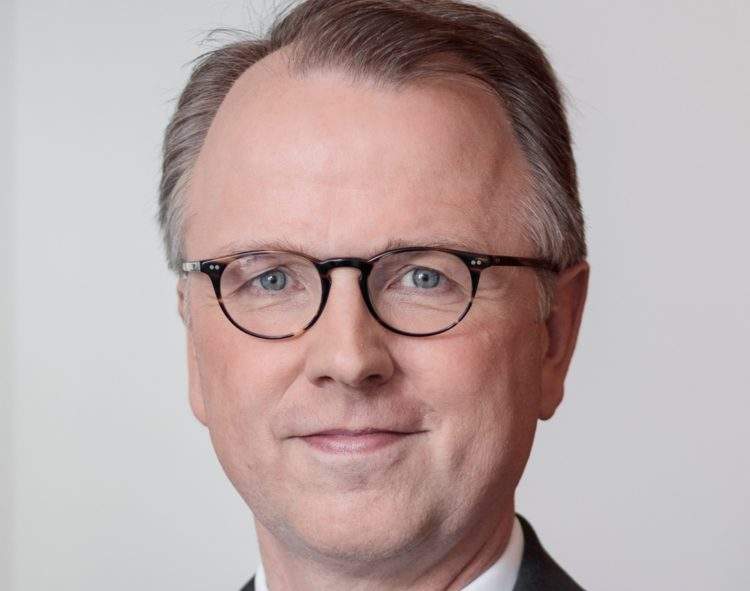
Kai Ostermann, chief executive officer of Deutsche Leasing, succeeded Martin Mudersbach in May to become president of BDL, the German leasing association. He speaks to Leasing Life about his role, the state of the German leasing industry, and how the digital era can work in the leasing industry
What would you say is your mission as BDL president?

Access deeper industry intelligence
Experience unmatched clarity with a single platform that combines unique data, AI, and human expertise.
With its Leasing 2020 strategy, BDL has placed itself well to meet the challenges of the future. We must now continue to pursue this strategy, positioning the leasing industry more effectively as part of the real economy, and as the partner of medium-sized companies. This will also mean we will be forging closer links with SMEs and trade associations.
Leasing has long provided a link between the real economy and the financial sector. We promote the sales and investment activities of our commercial partners and our business customers. Over 80% of our customers are medium-sized companies, and we ourselves are also largely an SME sector.
The BDL will continue to argue the case for investment incentives and a regulatory regime that takes account of the small and medium-sized structure of the leasing industry and national tax and legal frameworks.
How has the German leasing market performed in recent months?

US Tariffs are shifting - will you react or anticipate?
Don’t let policy changes catch you off guard. Stay proactive with real-time data and expert analysis.
By GlobalData2016 was a record year for leasing in Germany, and this positive performance spilled over into the first quarter of 2017. In the first three months of the current year, new business acquired was 10% up on the first-quarter figures for 2016.
Which asset classes have seen the most change in new leasing volumes and why?
As in 2016, vehicle leasing was the main driver of growth in the German leasing market. New passenger car-leasing business acquired in the first quarter was 12% higher than in the corresponding period in 2016, and the leasing of commercial vehicles increased by 10%.
Leasing of machinery increased by around 5%, marginally higher than the increase in the value of new machinery orders placed in Germany. New IT business, on the other hand was down 1%, but this was a moderate drop compared with the downturns of the preceding quarters.
We are currently experiencing strong demand for cars. Between January and March new vehicle registrations were up by 7%, and leasing has profited disproportionately from this positive development.
Companies in particular tend to view service fleet and leasing as indivisible concepts. Not infrequently, the add-on service packages offered by leasing companies are what persuade firms to opt for leasing when it comes to financing new vehicles. These extra services give them financial breathing space, and this enables them to concentrate on their core business activities.
What are the current challenges and opportunities facing the German leasing industry?
While there has been no more than moderate growth in investment in equipment, companies in Germany have increasingly been investing abroad. Clearly, there is a need for incentives to encourage companies to invest in Germany.
We remain convinced that the introduction for an unlimited period of the decreasing-balance method of depreciating assets would be the best way to kick-start investment activity. What is more, this method of writing off an asset provides a more accurate reflection of that asset’s value at any given time during its useful life.
The leasing industry is also feeling the effects of sustained low-interest policies: Persistently low rates of interest are having a significant effect on leasing companies’ incomes, and on the costs they are having to shoulder.
We see potential for growth in the ongoing process of digitalisation. The digital transformation of commerce and the advent of Industry 4.0 are necessitating huge investments. The leasing industry is perfectly placed to realize these investments on behalf of its customers.
Digitalisation is increasing the pace of innovation. The methods allowed for the writing off of software and capital goods against tax must be adapted to take account of these shorter cycles of innovation.
How have residual values been performing generally, and which asset classes have seen the greatest change?
Because of the current healthy state of the economy, prices in the markets for used assets are good, and residual values have also remained stable.
Are emerging trends, such as pay-per-use models, gaining a foothold in the German leasing industry?
Leasing provides appropriate solutions for many of the challenges investors are currently facing.
New business models are prompting new financing models, and these are establishing themselves in the marketplace. Pay-per-use, pay-per-save and other operator models are examples of this.
Digitalisation and big data are bringing into focus how much leasing companies need to develop further innovative financing and usage models.
How do you see the landscape for asset finance developing during 2017?
Investment in equipment in Germany looks set to grow by 1-2% in 2017. We are working on the assumption that the rate of growth in new leasing business will continue to outstrip the rate of aggregate investment; we expect moderate growth somewhere in the region of 5%.
On account of the present political uncertainties and the ongoing debt crisis, the European market remains fragile. But although investment activity remains at a low level, it is nevertheless stable.
In its Winter Economic Forecast, the European Commission predicted that the GDP of the euro area would grow by 1.6% in 2017. So we remain optimistic, and expect the leasing sector in Europe to continue to develop positively.
Is there anything else you’d like to note about asset finance?
More than ever, as investment instruments, leasing and asset finance are closely attuned to present-day operating conditions and the needs of modern companies.
In our digitalised world, utilisation rather than ownership is the key factor – and that is a perfect match for the basic concept of leasing.







